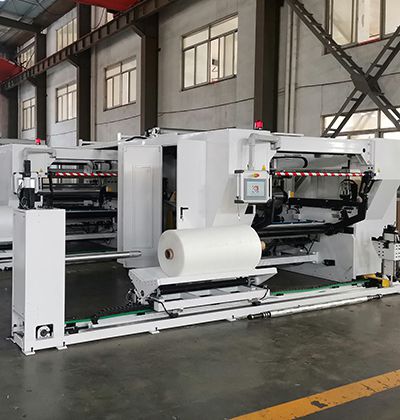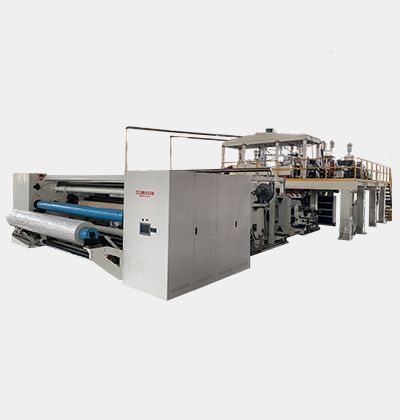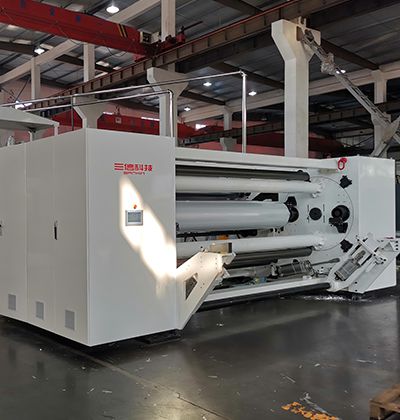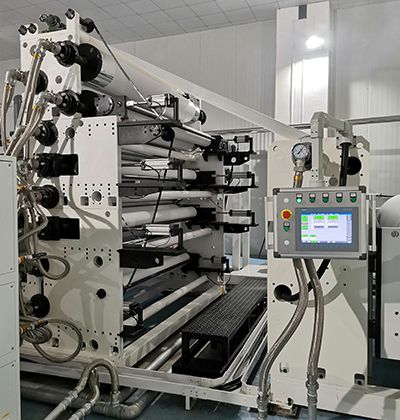What are the common processing methods for plastic film?
The common processing methods for plastic film include cast film and blown film.
Between the two processing methods for plastic film, which one is more widely used?
According to industry statistics, plastic films produced by cast film lines have higher transparency and thinner thickness, making it more versatile. As a result, cast film equipment has a higher market share.
What are the typical components of a cast film line?
A cast film line generally includes extruder, cast film cooling system, thickness gauge, corona treater, edge trimmer, and winder. Some cast film lines may also come with stretching and deep embossing systems.
How many layers of plastic film can the cast film line produce?
Depending on the extruder, the cast film processing equipment can produce single-layer films, three-layer co-extrusion films, five-layer co-extrusion films, seven-layer co-extrusion films, and nine-layer co-extrusion films.
How many methods are there for forming plastic film?
There are three methods for forming plastic film: by extruder, by calendering machine, or by stretching the films obtained from the first two methods. Among all forming methods by extruder, there are three specific methods: extrusion blow molding film, cast extrusion molding fim, and extrusion traction molding film.
What are the factors affecting the quality of cast film?
The quality of cast film is measured in several aspects, with thickness uniformity being the primary concern. Controlling the thickness of cast film is the most critical issue in the production process, and there are many factors that influence it, mainly including:
Extrusion molding temperature
Die lip gap of extruder
Gap between the die lip and cooling roller
Online film thickness measuring
Film cooling and forming
Film winding
How does a corona treater works?
Some materials with low surface energy often have poor adhesion to inks, adhesives, and coatings. To achieve optimal adhesion, the surface energy of the substrate must be equal to or higher than that of the substance (e.g., ink or adhesive) applied to it. To increase the surface energy, the material is subjected to corona discharge. When voltage is applied, surrounding oxygen molecules are broken down into atoms, and these atoms combine with the molecular ends present in the material being treated, resulting in a chemical reaction that activates the surface. Surface tension increases, adhesion is enhanced, and further processing can be carried out.
What kind of materials can be corona treated?
PP / PE / PET / PVC / PA / PFE / PTFE / Paper / Metallized foil / Nonwovens / Foam / Wire / Sheet / Glass.
What are the surface materials of corona rollers?
The metal rollers include stainless steel rollers and aluminum alloy rollers. There are ceramic-coated rollers as well.
What are the categories of electrodes?
Metal electrodes (including aluminum and stainless steel ones) and ceramic electrodes.
How to maintain electrodes?
Regularly check the distance between the electrode and the roller to ensure it falls within the standard range.
Periodically clean the electrodes and insulators: You can use a brush or a cloth dipped in alcohol for cleaning, but avoid using corrosive solvents. Regular cleaning, especially during high humidity seasons, is essential.
Avoid collisions and compression during use.
Keep the electrodes dry to maintain optimal discharge performance and prevent potential sparking issues.
What is backside corona treatment? And how to avoid it?
For thin films (thinner than 15μm) running at high speeds, air may be entrained on the backside of the film, causing air ionization and leading to backside corona.
Solution:
1. Properly control the tension of the film during production.
2. Add a flattening roller before the film enters the corona system to ensure a smooth entry.
3. Add more pressure rollers, and ensure strict static and dynamic balance testing between the pressure roller and the corona roller. The pressure roller force must be appropriate.
What is Dyne value?
Dyne is a unit measuring surface tension, commonly known as surface energy. It is a critical criterion for surface treatment. In general, the higher the Dyne value, the easier it is for the surface to be colored or adhered.
How to measure the Dyne value?
The commonly used and simple testing method is the Dyne pen, which comes in various specifications such as 30, 40, 50, 60, and 70. To measure the Dyne value, place the Dyne pen vertically on the surface of the film and apply appropriate pressure to draw a line. Then, based on the extent of contraction or spreading of the line, you can determine the Dyne value. If the line is evenly distributed without appearing contracted or any pen dot, it indicates that the surface Dyne value is higher than or equal to the value marked on the Dyne pen.
What are the main factors affecting corona treatment performance?
1. Temperature
2. Environmental Humidity
3. Raw Materials
4. Backside Corona
5. Storage Time

 Service
Service Spare Parts
Spare Parts FAQs
FAQs Download
Download



